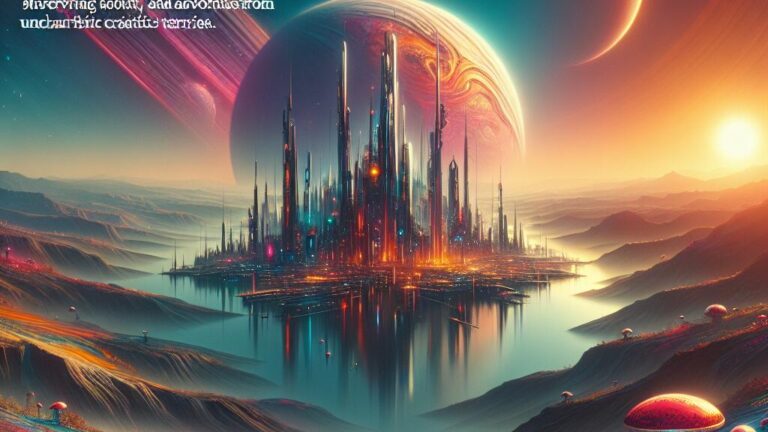Investing in Space Tourism
Space tourism has gained significant traction in recent years, with companies like SpaceX and Blue Origin leading the charge in offering commercial space travel experiences. As private entities invest more resources into this sector, opportunities for individuals to venture beyond Earth’s atmosphere are becoming increasingly accessible. The prospect of space tourism represents a paradigm shift in how we perceive space exploration, transforming it from a purely scientific endeavor into a potentially lucrative industry with the potential to attract a diverse range of participants.
One of the key challenges facing the space tourism industry is ensuring the safety and comfort of passengers during their journey to space. Companies are focusing on developing innovative spacecraft designs that prioritize both functionality and passenger experience. By creating spacecraft that can withstand the rigors of space travel while also providing a comfortable and enjoyable environment for passengers, the industry aims to revolutionize the way we interact with the cosmos.
Designing Commercial Space Travel Experiences
Designing commercial space travel experiences involves a blend of cutting-edge technology and innovative design concepts that provide a unique and memorable journey for space tourists. Companies in the space tourism industry are focusing on creating spacecraft that are not only safe and reliable but also offer a high level of comfort and luxury to passengers. From spacious cabins with large viewing windows to state-of-the-art entertainment systems, every detail is meticulously crafted to ensure an unforgettable experience for travelers venturing beyond Earth’s atmosphere.
In addition to the spacecraft itself, companies are also investing in creating tailor-made experiences for customers, including personalized space tours, special events in orbit, and opportunities for unique activities like spacewalks or zero-gravity flights. By incorporating elements of exclusivity and customization into commercial space travel packages, companies are aiming to attract a wider range of customers and establish space tourism as a thriving industry. The ultimate goal is to make space travel not just a technological feat, but also a transformative and enjoyable adventure for those willing to venture into the final frontier.
Securing the Future of Space Habitats
Securing the future of space habitats is crucial for the long-term sustainability of human presence beyond Earth. As we venture further into space, establishing safe and reliable habitats will be paramount to support life in the hostile environment of other planets. These habitats must be designed with robust and redundant systems to ensure the well-being of inhabitants and withstand the challenges of space travel.
Developing self-sustaining lunar and Martian colonies is a key aspect of securing the future of space habitats. By creating habitats that can produce food, water, and oxygen independently, we can reduce reliance on Earth for essential supplies. This self-sufficiency not only ensures the survival of colonists in case of emergencies but also paves the way for long-term human presence in space.
Developing SelfSustaining Lunar and Martian Colonies
Developing self-sustaining colonies on the Moon and Mars is a significant step forward in our efforts to expand human presence beyond Earth. Establishing habitats that can support life independently from Earth’s resources is crucial for long-term space exploration and colonization. Scientists and engineers are exploring innovative technologies and sustainable practices to make these colonies self-sufficient and resilient in the challenging environments of these distant worlds.
Key aspects of developing self-sustaining lunar and Martian colonies include designing efficient life support systems, utilizing local resources for construction and energy generation, and creating closed-loop systems that minimize waste. These colonies will need to produce their own food, recycle water and air, and find ways to protect inhabitants from the harsh radiation and extreme temperatures of these celestial bodies. By addressing these challenges and pioneering new solutions, we are paving the way for a future where humans can thrive beyond the confines of Earth.
Advancing Space Medicine and Health
Advancing space medicine and health is crucial for the success of future space exploration missions. Understanding the long-term health effects of space travel on astronauts is essential for ensuring their well-being during and after missions. Researchers are conducting comprehensive studies to analyze how extended stays in space impact various aspects of human health, such as bone density, muscle mass, cardiovascular function, and immune system responses. These findings will enable scientists to develop effective countermeasures to mitigate the negative effects of microgravity on the human body.
Moreover, advancements in medical technology are revolutionizing the way healthcare is delivered in space. Novel telemedicine tools and remote monitoring devices allow astronauts to receive real-time medical assistance from healthcare professionals on Earth. In emergencies, telemedicine enables astronauts to communicate vital health data and images to experts who can provide diagnosis and guidance for treatment. These innovations not only improve the quality of healthcare for astronauts but also pave the way for future space missions to distant destinations where immediate medical intervention is not readily available.
Conducting Research on LongTerm Health Effects of Space Travel
Conducting research on the long-term health effects of space travel is crucial for the sustainability of human exploration beyond Earth. As humans venture further into space, it is essential to understand how extended exposure to microgravity and cosmic radiation impacts physiological functions. Establishing the potential health risks inherent to space travel will enable scientists and medical professionals to develop effective countermeasures to mitigate these challenges and ensure the well-being of astronauts on long-duration missions.
Moreover, studying the long-term health effects of space travel provides valuable insights into how the human body adapts to the extreme and unique conditions of space. By examining changes in bone density, muscle mass, cardiovascular function, and immune response over extended periods in microgravity, researchers can unravel the mysteries of human physiology in space. This knowledge not only enhances our understanding of human health in space but also contributes to advancements in healthcare on Earth by uncovering novel treatments for conditions that affect both astronauts and individuals on our home planet.
Utilizing Robotic Explorers for Space Discovery
Robotic explorers have revolutionized the way we gather information about our universe, especially in the realm of space exploration. These advanced machines are designed to withstand the harsh conditions of space and explore regions beyond human reach. With the ability to navigate distant planets and celestial bodies, robotic explorers have provided scientists with invaluable data and insights that inform our understanding of the cosmos.
One of the key advantages of utilizing robotic explorers is their efficiency in carrying out repetitive or dangerous tasks in space. These machines can gather data continuously without the need for rest or life support systems, allowing for prolonged explorations and data collection. Additionally, robotic explorers can be equipped with a variety of sensors and tools that enable them to analyze samples, take images, and even conduct experiments in space environments. This versatility makes them indispensable in pushing the boundaries of our knowledge and paving the way for future manned missions.
Sending Autonomous Probes to Explore Distant Planets
Sending autonomous probes to explore distant planets represents a significant advancement in space exploration technology. These unmanned spacecraft equipped with sophisticated instruments and cameras can venture into the depths of our solar system, collecting valuable data and images that would otherwise be impossible to obtain. By studying these distant planets up close, scientists gain insights into their composition, atmosphere, and potential for harboring life.
The utilization of autonomous probes also eliminates the risks associated with manned missions to far-off celestial bodies. Without the need to support human life onboard, these probes can be more lightweight, maneuverable, and cost-effective. Moreover, their autonomy allows them to adapt to changing conditions in space without real-time human intervention, making them reliable and efficient explorers of the unknown realms beyond Earth.
FAQS
What is the significance of investing in space tourism?
Investing in space tourism not only opens up new opportunities for commercial ventures but also increases public interest and involvement in space exploration.
How can commercial space travel experiences be designed to attract more participants?
Commercial space travel experiences can be designed by focusing on factors such as safety, comfort, and unique offerings to attract more participants and make the experience memorable.
Why is it important to secure the future of space habitats?
Securing the future of space habitats is crucial for long-term human presence in space and for supporting activities such as research, exploration, and colonization.
What are the benefits of developing self-sustaining lunar and Martian colonies?
Developing self-sustaining lunar and Martian colonies can provide a backup plan for humanity, enable further exploration, and facilitate the advancement of science and technology.
How does advancing space medicine and health contribute to space exploration?
Advancing space medicine and health is essential for ensuring the well-being of astronauts, understanding the effects of space travel on the human body, and improving healthcare technologies for both space and Earth applications.







